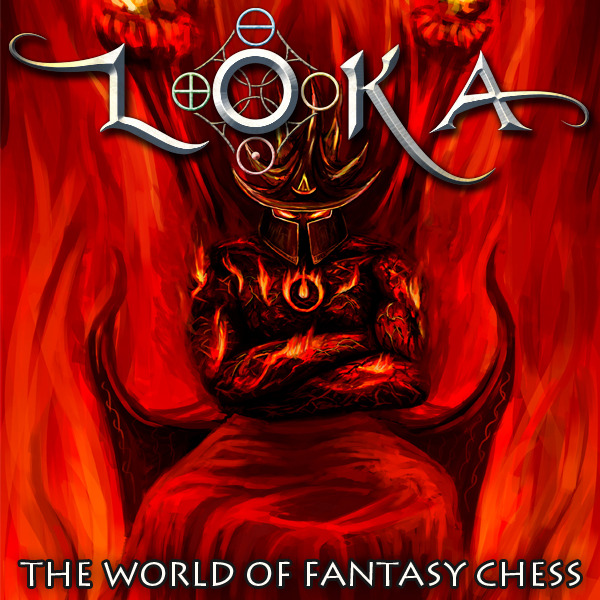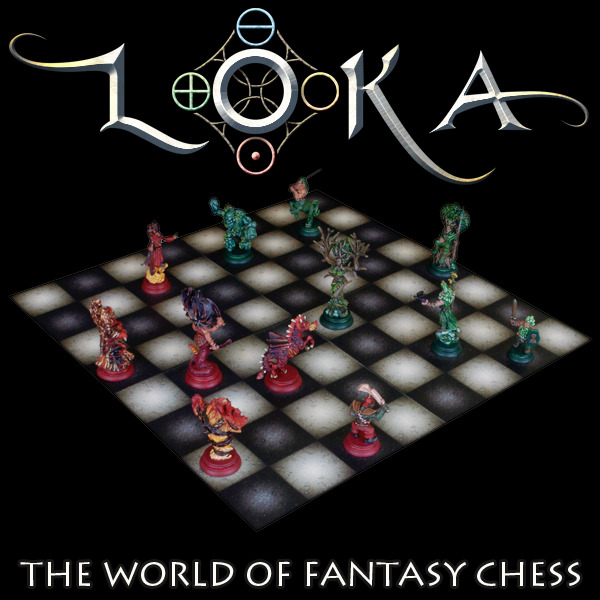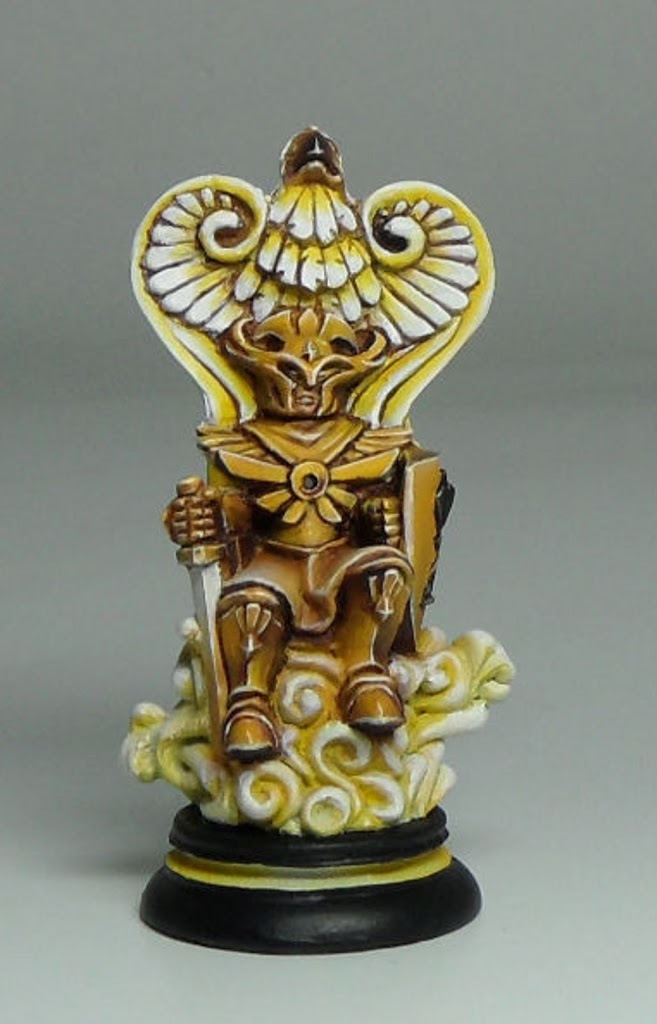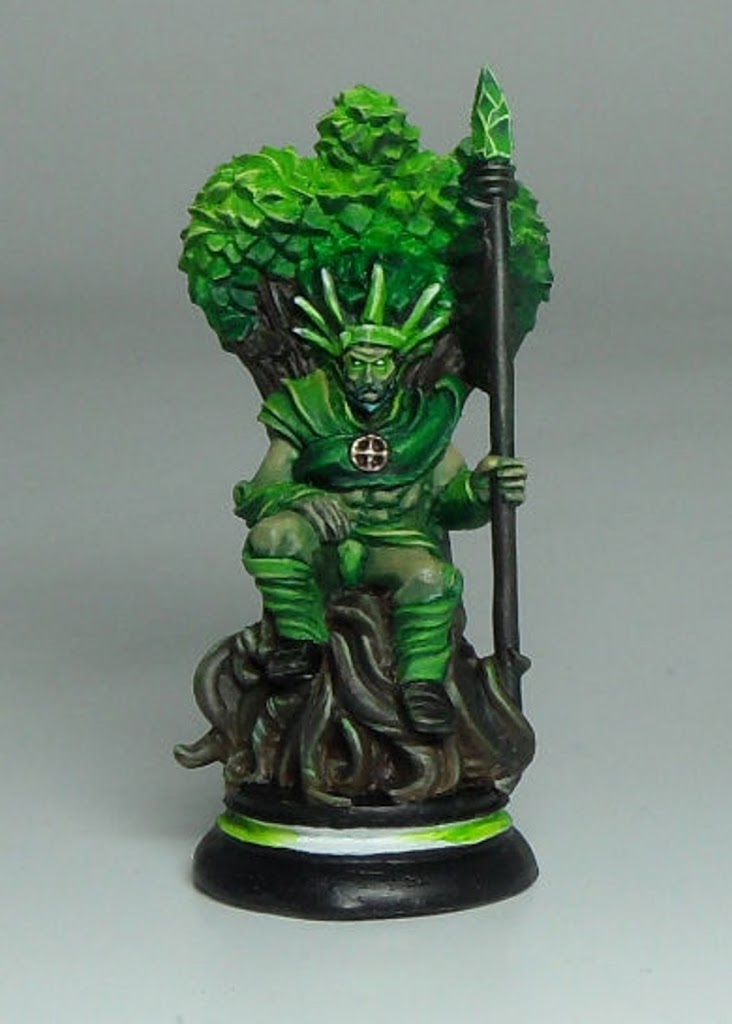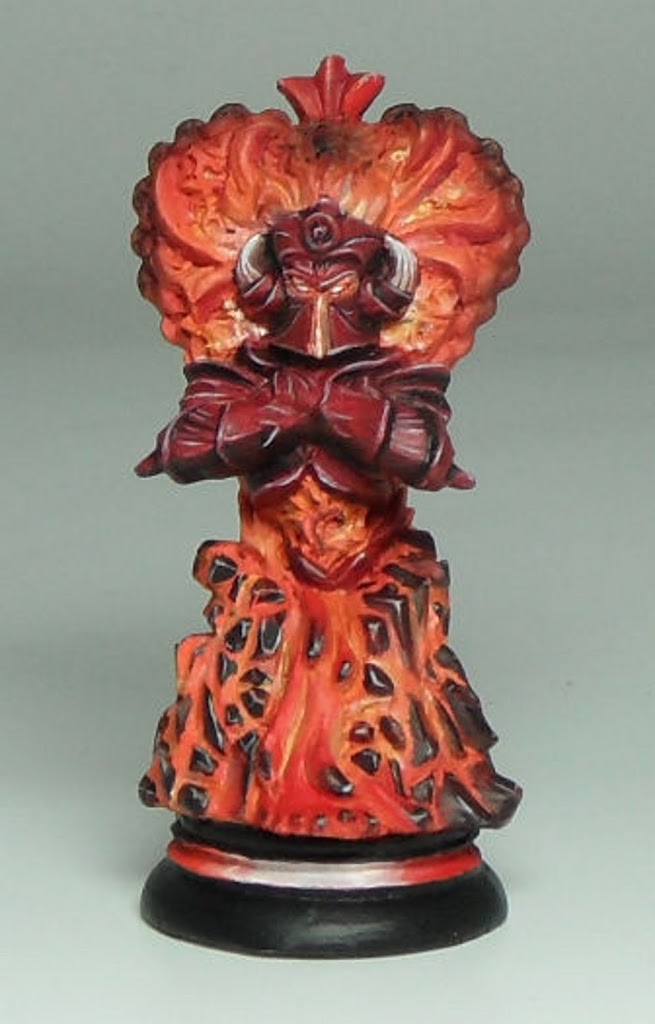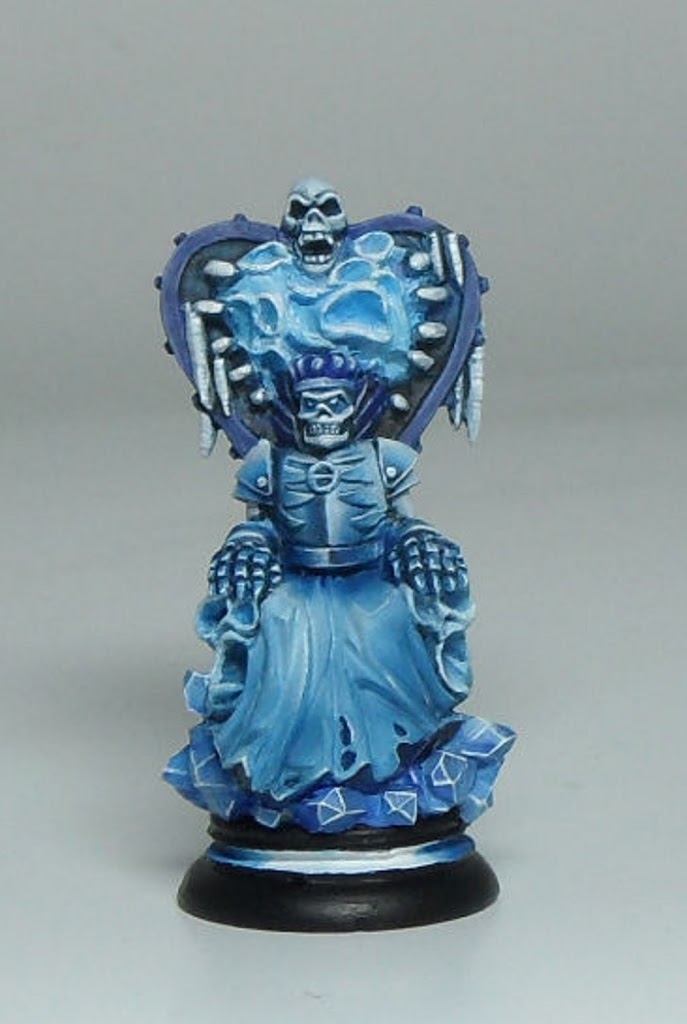Interview – Alessio Cavatore’s Newest Endeavour – LOKA!

Hello everybody, it’s Falk from the Tabletop Fix. Today I bring you an interview with a very prominent member of the gaming industry – Alessio Cavatore is here to talk about his new game Loka!
Me: Hello Alessio and thank you for taking the time to answer a couple of questions for us. I think we can skip the introduction part, everybody who hasn’t lived under a rock for the last decade would have seen your name attached to a lot of very successful projects like Lord of the Rings or Kings of War. Let’s start with a simple task: describe your new game Loka in three words!
Alessio: Wargaming meets chess.
Me: Loka is your third game based on chess. What fascinates you the most about this game?
Alessio: I don’t really regard it as a third game, but rather as the coronation of the dream, of the vision that was at the root of Shuuro and Turanga. What I love about chess is that cleanness, purity and ‘basic simplicity’ of rules, and yet the amazingly sophisticated gameplay they generate. And I love the fact that at the same time, the pieces are not just abstract discs or balls, but rather evocative ‘characters’ that are drenched in history, and summon a great feel of medieval and classical warfare.
Me: A lot of people expected Loka to be Shuuro with a Fantasy theme. Can you give us a short comparison of the two games?
Alessio: Loka plays very differently from Shuuro. Shuuro is very much more chessy and precise, while Loka is a lot more of a boardgame/wargame feel as the dice-driven combat system makes all certainties of chess go away. In Loka, the chaos generated by the dice, and by the weird effects of the fantasy terrain, make the atmosphere very relaxed and fun, as the pieces sometime pull out that unexpected ‘desperate fight’ taking on very heavy odds, or die unexpectedly in the most one-sided of fights that suddenly goes against them. The dice involvement makes the whole experience more forgiving, as one can always blame defeat on bad rice rolls, not on poor tactics!
Me: Chess is considered the prime example of “easy to learn, hard to master”. Do I need to know how to play chess to play Loka?
Alessio: Well, because the pieces move like chess pieces, if you do know the rules of chess, you can learn Loka in five minutes, from reading the ‘rest of the rules’ (the whole two pages of them!). And if you don’t, the rulebook includes the rules of chess, and they take about another five minutes to read…
Me: In your video on Kickstarter you mention polyhedral dice. Does that mean the game will use more than one kind of die?
Alessio: It can work either by using just the D8, or by using all of the polyhedral. The two systems are very similar in statistical terms, but I prefer the one with all of the polyhedral dice (minus the D10… as it’s not a perfect, Platonic solid!). Which one we’re going to go for is a function of the Kickstarter… as the whole set of polyhedral dice is a lot more expensive to include in a game that a single type of die.
Me: I guess the dice will be used for combat. Does that mean the pieces come with an individual “stat line” or are they all of equal strength, i.e. has a bishop a better chance to kill a pawn than the other way around?
Alessio: The dice are indeed used for combat (and for placing terrain and some terrain effects). The pieces are of equal ‘combat strength’, but as they move like chess pieces, you can appreciate how a queen is immensely superior to a pawn. In my head, the Queen would represent a powerful sorceress with her entourage of acolytes and bodyguards, while a pawn represents an infantry unit, like a regiment… So a queen can zip around the field bringing her might to the right place in the battle, while the pawn is very powerful against a target right in front of it, but is very very slow and easy to outmanoeuvre.
Me: This is a very interesting and cinematic vision you are creating here. Will the overall situation on the board be important for combat resolution, i.e. can pieces support each other or are they at a disadvantage when they become surrounded?
Alessio: The combat system is entirely based on mutual support. A piece has a basic combat value, and a number of bonuses that build up, either giving the fighting piece more dice, or upgrading its polyhedral dice to a better ‘level’. To offer support, a piece must be able to ‘cover’ (i.e. move to) the embattled square – which is true for both defenders and attackers. In addition, the attacker gets a basic offensive bonus for initiating the attack, while the defender might get defensive bonuses in certain type of terrain.
Me: How do you balance the point costs in a game like chess that depends so much on player’s skills?
Alessio: Chess already has a points value system! That is in part what made me think of the whole shenanigan of Shuuro and Loka in the first place. When you learn chess, they teach you that it’s OK to lose a knight in exchange for three enemy pawns, or a rook in exchange for five pawns, or a knight for a bishop, thus the pawn is the unit against which everything else is measured. So if a pawn is worth 1, a knight or bishop is worth 3, a rook is worth 5 and a queen is 9. In Shuuro I altered these proportions, as the board was of a different size and the obstacles only benefited knights, but in Loka I keep the normal chess proportions in value, as the board is the normal size and the terrain benefits all pieces more or less equally.
Me: One way to balance Loka for different skill levels is to play an asymmetric game in which the less skilled player gets a higher point limit. Will the rules help the players to find the right handicap or is it up to them to figure out a balanced setting?
Alessio: Only the campaign setting will have a written down handicap system (for larger armies fighting smaller armies). In a normal game is down to the players, as it’s quite difficult (if not impossible) to ‘rate’ how good a player is…
Me: Another interesting aspect of Loka is the use of scenery tiles. Can you tell us something about them?
Alessio: The terrain is all sorts of fantasy classic features, like forests, castles, swamps, mountain passes, stone circles, dragon’s lairs, etc. Each feature has a very simple rule attached to it. The swamp for example stops pieces getting into the square and forces them to roll a die, on a 1 they are swallowed by quicksand, devoured by a many-tentacled beast or simply disappear in the mist never to be seen again… Some tiles favour a certain type of piece and offer a defence bonus to it. Forests, for example, can only be entered by pawns (representing infantry breaking into skirmish formation), and pawns defending a forest against enemy pawns get one bonus to their combat dice. Perhaps the funniest and most tactically interesting terrain feature (at least for the moment) is the magic portal, of which there are always two and that are connected, so pieces can step into one and leave from the other…
Me: How are they chosen and placed? Are players buying them from their point budget?
Alessio: I think there are going to be four terrain tiles on a normal board, for ‘normal density terrain. There is chart to roll on, or you can simply place the terrain tiles face-down and pick them at random. The D8 is then rolled twice and it gives you the coordinates (e.g. three horizontal, seven vertical) where to place the terrain. This is done after choosing the army, which is an important tactical nuance…
Me: Nice, so both players can actually build a strategy to make the most out of the terrain. That sounds like a great way to guarantee pitched battles at certain focus points.
Me: There are four factions in Loka based on the four elements. Are they just different designs or will they represent different play styles with individual special rules?
Alessio: The factions are purely aesthetic, and so they could be two, three, four, five or more… depending on the outcome of the Kickstarter. Individual special rules will immediately generate an imbalance, and it’s not planned for in the core game. Said that, a lot of fun could be had with adding a deck of cards that is specific to each faction, and that could be used by players that wanted to, but I think that is going to be either an optional rule or an expansion…
Me: Is there a fluff section in the rulebook explaining the factions and the reasons they fight each other?
Alessio: A very a small one, but it’s something that we could add, up to the point of commissioning a novel or a story I have in mind… once again, it depends on the amount of resources we’ll be able to gather.
Me: Are there plans for more factions in the future or will you stick to the four that have been announced?
Alessio: I would love to have more, of course, but we’ll have to see how much support we get!
Me: Will the game include a campaign system allowing players to play a series of connected games?
Alessio: I have already written that, and it uses the Loka map you have seen, so that your games of Loka are interconnected to allow you to carve yourself an empire!
Me: I can see a lot of potential for campaign-driven scenarios with that like escort or assassination missions. One of the rules that is quoted a lot by people involved in creative processes is “murder your darlings”. Was there such an element during the design of Loka that you really liked but just couldn’t make it work?
Alessio: Actually Loka is a very minimalistic design, and in a sense I am resisting the temptation to add more and more layers of complexity to it. The main one being the ‘faction-specific’ rules. Of course it’d be easy to design these rules, but I don’t want to. This boils down to my true vision or Loka. My intent is to create something that is not simply another wargame, otherwise I would have written one. What I want is a gaming experience that captures the creativity and fun of wargaming (a personalised army selection, a fantasy setting, colourful dice rolling and players cursing them…), but at the same type retains the absolute, beautiful balance of chess. No player can claim that an army is ‘broken’ or more powerful than another… we always have equal chances of winning when we engage in a game of Loka!
Me: In your introduction video you mention an even more advanced system on the horizon. What is your vision of the ultimate chess-based wargame?
Alessio: Well, the super-dream for me is the four-player version of the game (like in Turanga), where there are two teams of two players sitting around a table and importantly, you cannot communicate about the game during the battle! Imagine being sat in front of your teammate, with whom you have agreed the most evil, cunning plan before the battle. At first everything goes to plan, but as the game unfolds, the enemy counters with a brilliant strategy and a little luck… You need to alter the plan and attack there, in that soft spot… will your teammate see that alternative move that does not follow the original plan, but could be devastating and game-winning… if only he sees it…
Imagine the delight and the pats on the back if he does see it and execute it, and as a team you pick the enemies apart, or the rage at his imbecility as he blunders and does something completely silly! You are surely going to have a word after the game!
Me: That sounds very cool and exciting! And nerve-wrecking.
In my mind, tinkering with a venerable old game like chess should have limitations. So, how far is too far? For example, would you include ranged combat in such a game or would it then just turn into a normal wargame played on a square grid?
Alessio: As I was saying, I tried to design something different, and I’d contemplate that kind of rule, only if A – everybody has it in equal measure (e.g. it’s a power that all queens have), or B – it’s a card in the special, and optional ‘Fire’ deck of cards
Me: I think these were all questions for the moment and we got a good overview over your game and your intentions. Thank you again for taking the time to talk to us and all the best for your campaign!
If this interview made you curious about Loka or Alessio’s other games, visit the Loka on Kickstarter and Riverhorse Game!

